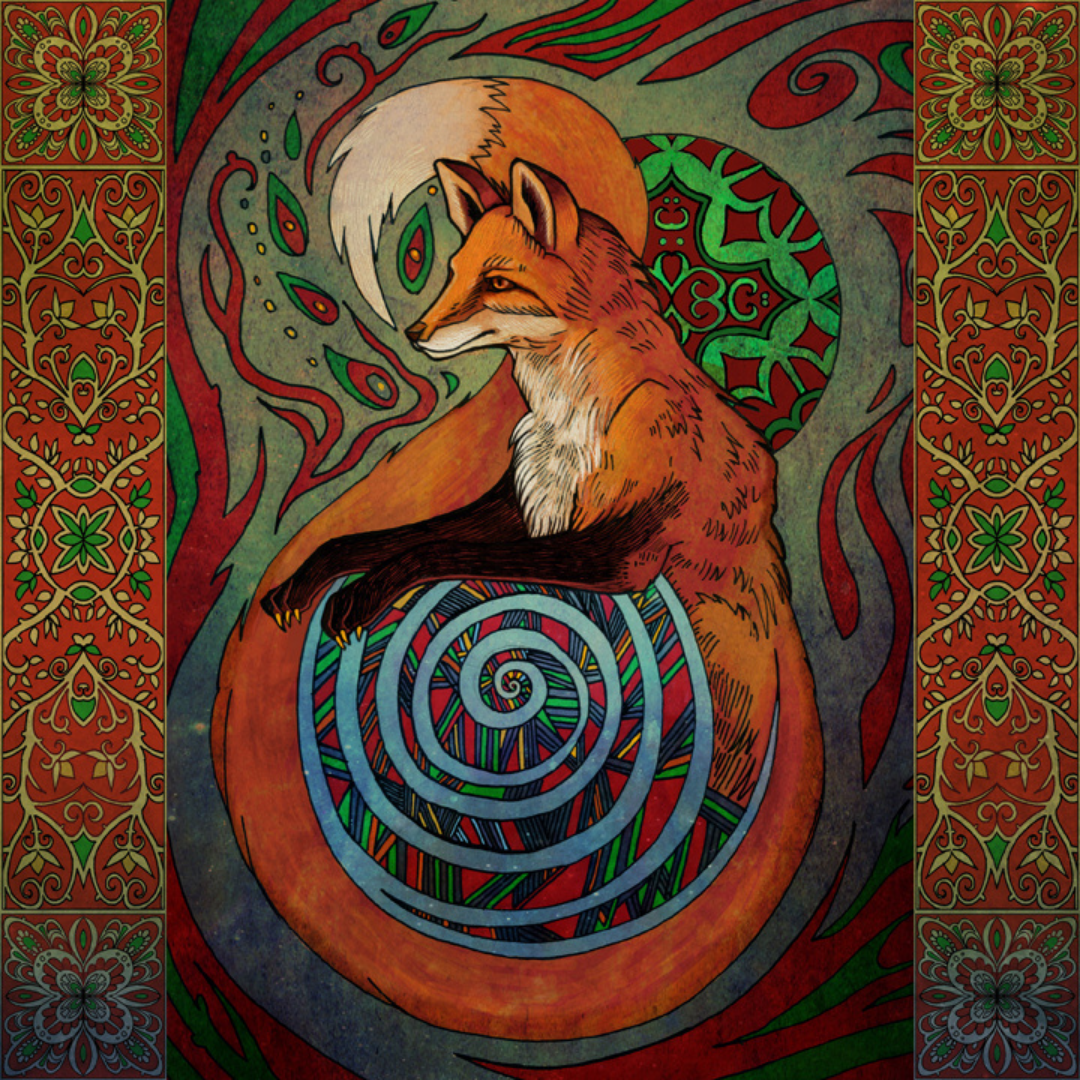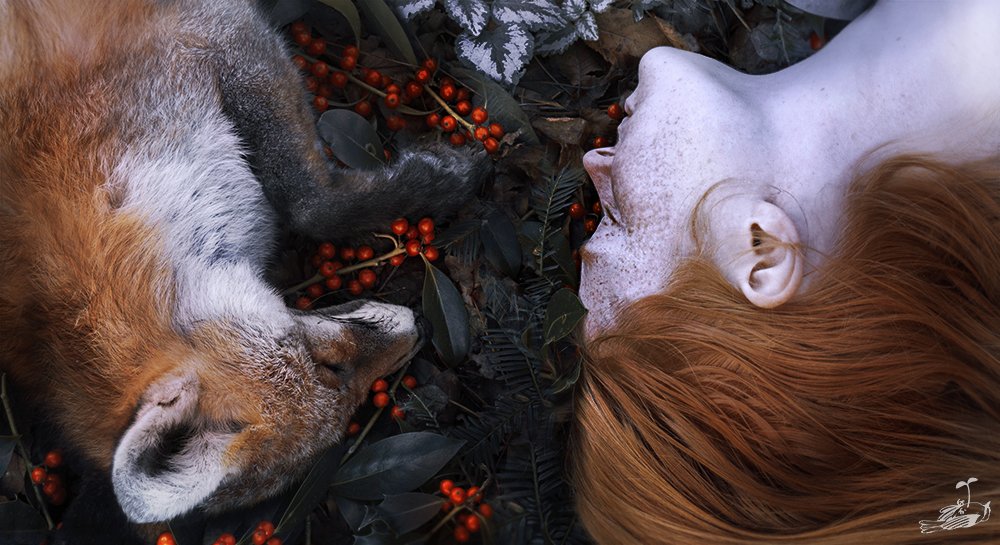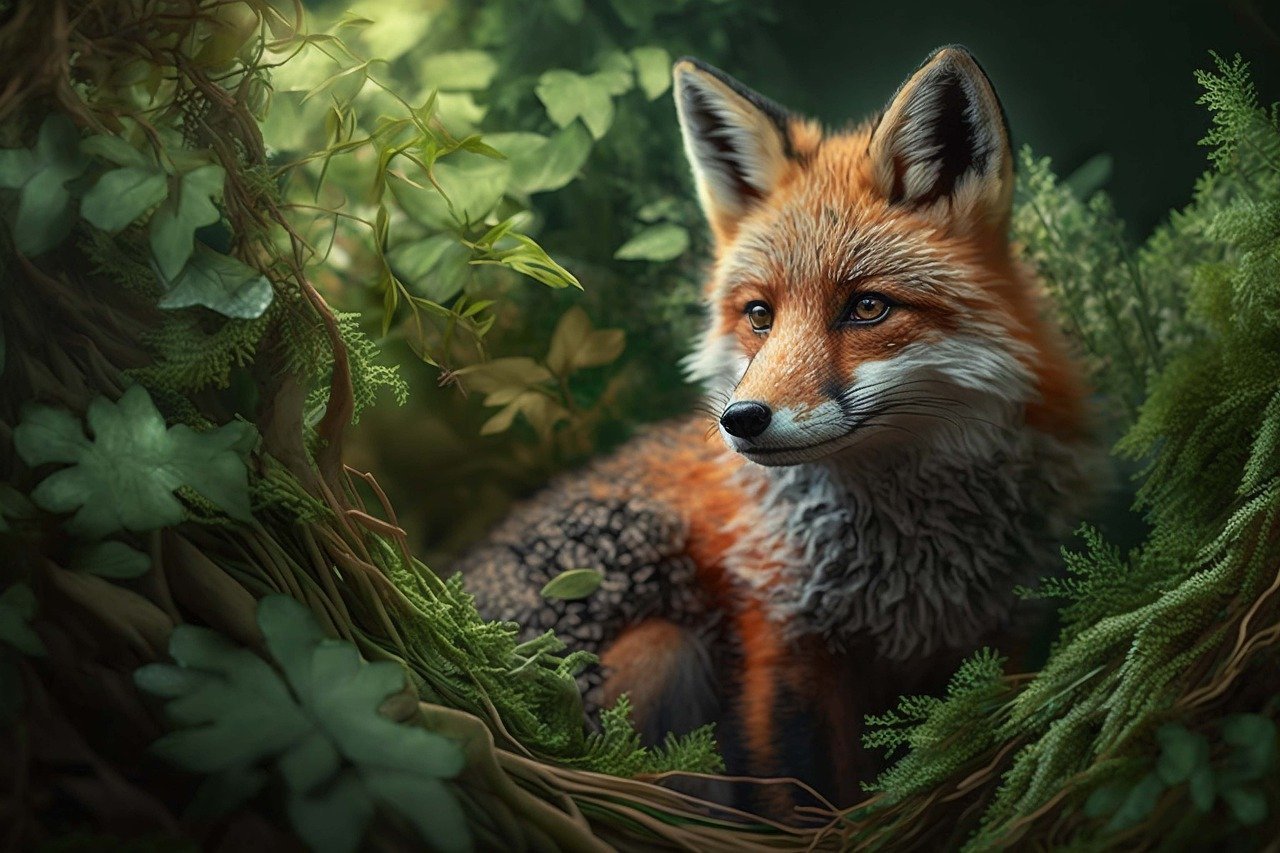Fox Symbolism Across Cultures: From Trickster to Guide
What is the Symbolism of the Fox?
(Art by yanadhyana on DeviantArt)
The symbolism of the fox varies across different cultures and mythologies. With its eloquent and cunning demeanor, occasionally venturing into the realm of duplicitousness, the fox embodies the quintessential qualities of a master trickster. Moreover, the fox represents cleverness, quick wit, and adaptability in many cultures.
Adorned with a fiery coat of red, its amber eyes glisten like precious gems, while its ears flicker like flames, imbuing the fox with a symbolism that evokes fire’s transformative and all-consuming nature. Therefore, the fox is often seen as a symbol of transformation, with its ability to change its appearance through its fur color and its association with the transformative power of fire.
The Enduring Legacy of the Fox: A Revered and Feared Symbol in Japanese Mythology
(Art by IrenHorrors on DeviantArt)
According to Japanese folklore, the Kitsune, a mischievous and cunning fox-trickster, is believed to have been the creator of the enigmatic shapeshifting fire. This elusive creature possesses an otherworldly radiance that calls out to us from beyond, much like the fox itself, which appears suddenly and dazzles us with its brilliance, only to vanish as quickly as it appeared. In Japan and China, no other entity has been endowed with such remarkable spectral potency as the enigmatic and alluring fox.
The fox holds an esteemed position as a kami. This mysterious spiritual force is linked with the primal elements of thunder, echoes, and dragons. Revered as a messenger of Inari, the benevolent Shinto deity of rice, the fox is regarded with respect and apprehension, as it possesses the potential for compassionate guidance and malevolent possession. In myth and legend, the fox is known to have a deep yearning for spiritual power and wisdom, making it a revered and feared figure in equal measure.
Fox Symbolism in Indigenous Cultures: Keen Perception, World Creation and Bestower of Fire
The Incas regarded the fox as the “son of the earth” due to its remarkable ability to perceive distant occurrences through the ground, making it a revered seer-shaman in their culture. Additionally, among the Inca, the fox was closely associated with the Pleiades constellation, representing the location in the sky where the winter solstice sun would rise.
Similarly, the fox acted as a subterranean guide for indigenous and Siberian shamans, using its underground knowledge to lead them through paths inaccessible and invisible to the human eye.
In the mythology of the Miwok people, Fox partnered with Coyote to create the world, emphasizing the significant role of the fox in their spiritual beliefs. Moreover, in numerous First Nations myths, Fox and Coyote stole the secret of fire. They bestowed it upon humanity, showcasing the fox’s trickster nature and its connection to the transformative power of fire.
Fox Symbolism in Greek Mythology: Transformation, Protection, and Trickery
(Art on Pixabay)
According to Greek mythology, the fox holds an exalted position as a protector and guardian of the vine and is intricately linked with Dionysus, the god of wine, fertility, ritual madness, and religious ecstasy.
As the god of wine, Dionysus represents the transformative power of fermentation, the bringing together of disparate elements to create something new and powerful. The fox, as a symbol of this transformative process, holds an important place in the mythology of this culture.
The fox’s association with the vine is rooted in its reputation as a creature with a keen sense of smell and taste. It is said that foxes could detect the ripest grapes; thus, they became synonymous with the vineyard and the wine-making process. The fox was also considered a protector of the vine, guarding against pests and predators that could harm the crop.
Moreover, the fox’s relationship with Dionysus is not limited to its role as a guardian of the vine. In Greek mythology, the fox is seen as a playful and cunning creature, much like the mischievous god himself. Both Dionysus and the fox are associated with trickery and disguise, able to change form at will and confuse their adversaries.
The fox’s connection to Dionysus also extends beyond the physical realm, as both embody spiritual energy. Dionysus is associated with the divine madness resulting from abandoning oneself to the transformative power of ritual and wine. The fox represents the energy and spirit of the natural world. Together, they form a powerful and dynamic duo, embodying the transformative and creative forces of the universe.
Fox Symbolism in Celtic Mythology: Spirit Guide, Renewal and Regeneration
(Art by Maquenda on DeviantArt)
The Celts held a deep reverence for the natural world. They believed that every living creature possessed its own unique spiritual essence. Among these creatures, the fox had a special place in their hearts, for it was seen as a wise and cunning guide of the forest. To the Celts, the fox embodied the spirit of the woods, possessing otherworldly knowledge and an ability to navigate the hidden paths of the forest with ease.
For the Celts, the fox was not merely a physical creature but a spiritual one. Furthermore, they believed the fox could move between the physical and spiritual realms as a bridge between the two worlds. Thus, the fox was seen as a guide in the spirit world, able to lead the Celts on journeys of discovery and enlightenment. Brigid, the goddess of the hearth, poetry, fertility, and healing, is sometimes depicted with foxes, which are seen as her sacred animals. The fox is seen as a messenger for the goddess, able to traverse the spiritual and physical realms with ease.
The Celts also saw the fox as a symbol of transformation and rebirth. The fox’s ability to shed its old coat and grow a new one each year was seen as a powerful metaphor for the cyclical nature of life and the importance of letting go of the past to embrace the future. As such, the fox was associated with the Celtic concept of renewal and regeneration and was often invoked in rituals and ceremonies that celebrated the changing seasons and life cycles.
In many ways, the fox represented the essence of Celtic spirituality - a deep connection to the natural world, a reverence for the cycles of life and death, and a profound understanding of the interconnectedness of all things. To the Celts, the fox was not just an animal but a powerful symbol of the spiritual forces that permeated every aspect of existence.
Fox Symbolism in Norse Mythology: Cunning and Trickery
Within the rich tapestry of Norse mythology, the wily fox held a prominent place among the pantheon of deities. At the heart of this mystical tradition was the figure of Loki, the mischievous god of cunning and trickery, who embodied the dual nature of light and shadow. Like the fox, Loki was a shape-shifter who could assume different forms, and the two were thus inextricably linked. In tales of Norse mythology, Loki often manifested as a fox, using his quick wit and guile to outsmart his foes.
Inviting the Fox Within
(Art from Pixabay)
In conclusion, the fox is a powerful symbol of guidance and transformation across cultures and mythologies. Its ability to navigate between physical and spiritual realms, and its association with deities such as Brigid and Dionysus, exemplify its importance as a spiritual guide and teacher.
By respecting and learning from this clever and adaptable creature, we can tap into its wisdom and creativity to navigate the complexities of our own lives. The fox reminds us to embrace our unique perspectives and intelligence and to approach the world with a sense of wonder and reverence for the mysteries that lie beyond our understanding.
What personal meaning do you attach to the symbolism of the fox?
How has the fox appeared in your life, and what significance do you give to these encounters?
Have you encountered the fox in your dreams, and if so, what message might it be trying to convey?
Warmly,⠀
Anny
References
Martin, K., & Ronnberg, A. (2010). The book of symbols: Reflections on archetypal images.
Kindly note: The information included in this blog is not intended nor implied to be a substitute for mental health services. Please consult with a qualified professional to determine the appropriateness of the information for your own life experiences or if you have any questions.





